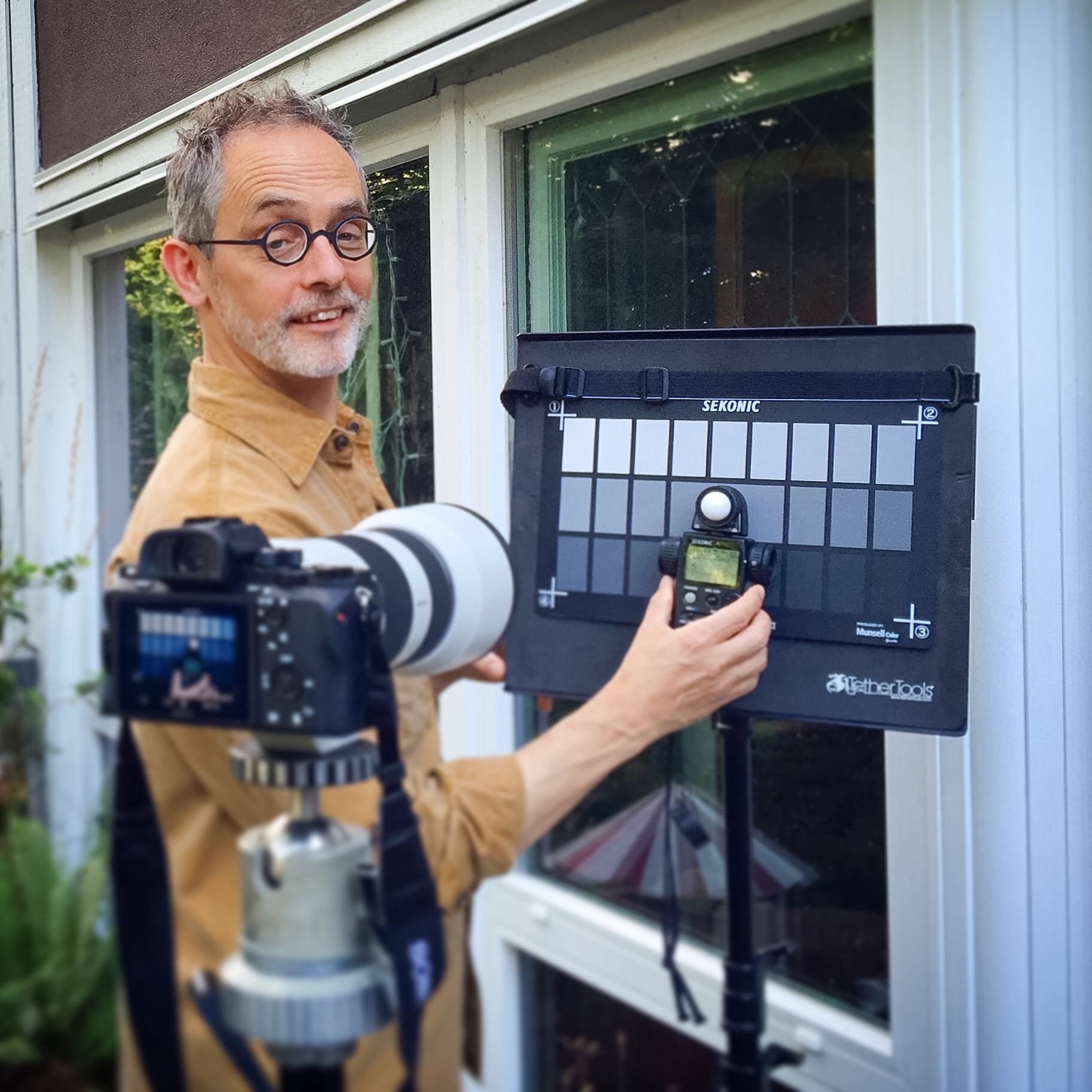I finally got around to testing out my new Sony A7r2 mirrorless camera. For some time I’ve suspected that it exposed on the dark side by around 2/3rds of a stop when using my Sekonic L-758DR light meter and so have been having to add some exposure each time I go to shoot. Now I know the meter is right on, I’ve tested it already, and so decided it was time to take a little time out and figure out exactly how far out the camera is, then create a correction on the meter to compensate. The Sekonic allows me to do this by shooting a test swatch which I secured to TetherTools platter with the security strap then tilted the platter vertically. This rig was then placed in an area outdoors with even lighting. After capturing some images of the swatch test, I ran it through the Sekonic calibration software on my MacBook. Low and behold it was 6/10ths of a stop out! With the meter hooked via USB to my MacBook, the Sekonic software programmed the meter compensate for the Sony. On this meter I can store up to 3 different camera profiles. Now I can meter and shoot with confidence again! The work I do is really involved in terms of lighting and so I love the accuracy of handheld meters over in-camera metering and so use handheld meters exclusively—also I usually shoot with studio strobes, in-camera meters can not read a burst of light from a strobe. Generally I start out by metering the heck out of my set (both incident and 1˚ spot reflective), then shoot a test shot to my computer via Tethertools. Being able to see the image on a large profiled screen really helps, but the metering gets me to that point faster and it gives me confidence that I’ve got the exposure and the ratios I want. When shooting on location the ambient light influences how you see the images on screen and so you can think you’ve got it nailed when really it is under or over-exposed. Histograms can help but they are really primitive and tell you nothing about the lighting ratios between lights. Having my camera and meter sorted is one less worry, one less distraction, one less thing to remember so I can allocate more brain cells to the the fun part, the creative side of the shoot! -All the best, Dave.





